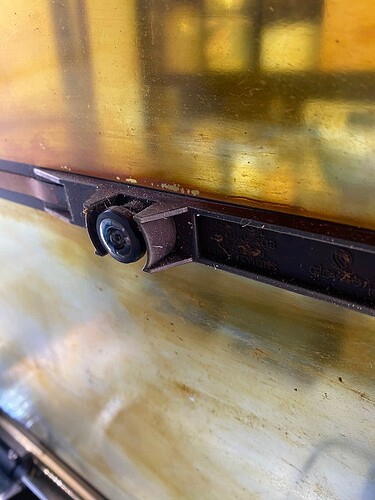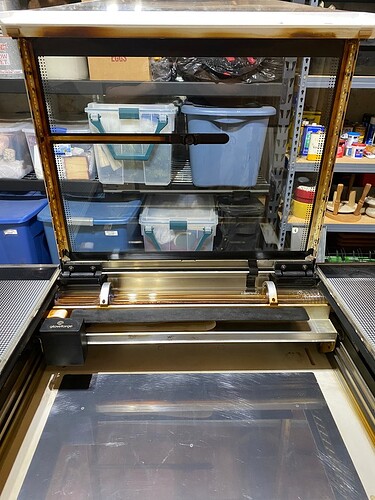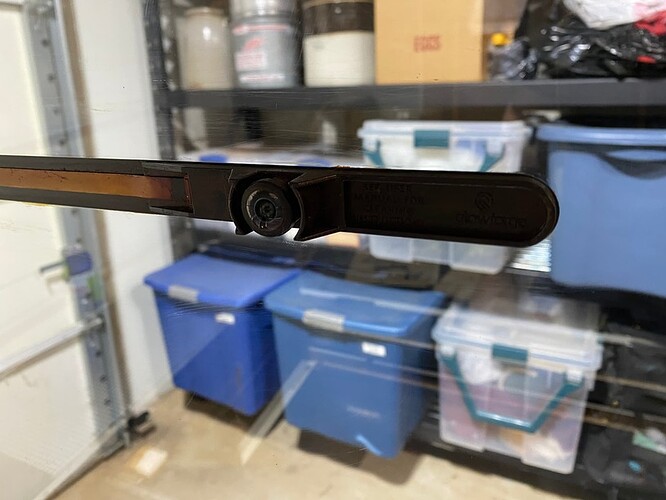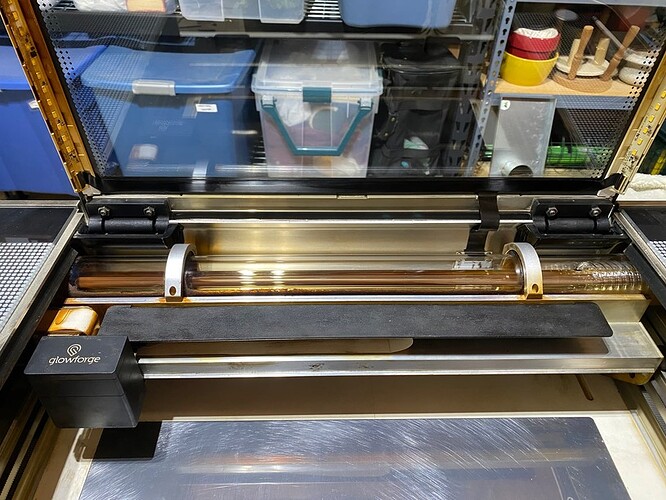I just bought a used glowforge pro and I’m trying to get it cleaned up. There’s a really bad yellow haze on the lid that I can’t seem to clean off. Anyone have a suggestion? I’ve tried Zeiss lens wipes but they’re not getting through it and wanted some guidance before trying other cleaners. Thanks!
I use a barely moist paper towel spritzed with a 50/50 vinegar water mixture.
Be very careful not to get the electronics wet. Never spray liquids directly on the machine. It can damage the machine. Especially around the exposed ribbon ends. Always unplug the machine to clean it and let it dry overnight.
You can use the same mixture to clean off that tube, and again, be sparing with the liquid on the cloth.
I spritz Simple Green onto a microfiber cloth, although mine has never gotten that bad. I stay well clear of the LED strips and center strip that goes to the camera.
I use awesome orange from the dollar store. It’s a degreaser and cuts right through that. You will need a lot of paper towel, but it will come clean
I use Hand sanitizer, on a terry cloth washrag (permanent stains occur but wash and reuse works fine) The terrycloth gives you a lot of damp with no drips. You will want to come back with dry terry cloth right after to avoid streaks.
As you can see, there are many cleaners, the best I’ve found is household ammonia, full strength. All but instant. The residue hardens or oxidizes over time, so it may take some elbow on that mess.
Can dissolve lungs and breathing as well, so that might be a contraindication.
Well, I’m sure there are individuals who would find it objectionable. ![]()
When cleaning the machine, I have the inline fan powered on, so the majority of the fumes are evacuated.
The household product is a dilute solution, it isn’t reagent grade ammonium hydroxide.
There are many household cleaners that are toxic, but like any chemical or compound, it’s the dose that makes the poison.
The solvent action is at least 5x faster than alcohol, and the large token orders I did presented a production environment where time = money. In that situation I took advantage of the power ventilation in my shop.
It’s effectiveness as a solvent, and that it evaporates quickly and cleanly makes it my go-to. It also won’t raise the grain of wood. The small amount that I use in cleaning either the machine or removing smoke residue from laser cut materials isn’t an issue for me. It’s also cheap.
The issue is sensitivity, much the most would hardly notice, can lock another’s lungs up tight.
Also quantity! Driving down the highway on a summer afternoon with the windows down, driving by an allied chemical plant I had my lungs slam shut for a few seconds. They must have spilled a drum of the stuff.
Update: Thanks everyone for the input. I ended up using simple green since I had some on hand. After a bunch of scrubbing I went back over it all with Zeiss lens wipes to clean off any residue from the degreaser. Easy better than what I started with.
Looks nice, major improvement!
One of the most vulnerable parts of the machine is that little circuit board on the back wall of the machine the black lid cable plugs into. Really easy to smoke that with moisture. We have seen a half dozen instances of it.
I love simple green for that stuff. Mr Clean manic erasers are also helpful for stuff that needs more scrubbing.
This topic was automatically closed 30 days after the last reply. New replies are no longer allowed.





